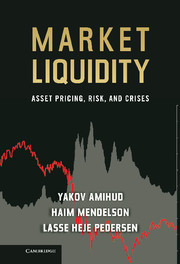Part II - Liquidity Risk
Published online by Cambridge University Press: 05 December 2012
Summary
Introduction and Overview
The Global Financial Crisis of 2007–2009 was associated with severe liquidity shocks in global stock and bond markets. Figure PII.1 shows the variation in trading costs over time as estimated by Investment Technology Group (ITG). It shows that at the height of the recent financial crisis, in the fourth quarter of 2008 (just after Lehman collapsed), average trading costs shot way up reaching 1.5% for small-cap stocks. On the whole, trading costs almost tripled during this quarter, compared to their level in the quarter with the highest liquidity (lowest trading costs), and within the crisis quarter there were days with far higher trading costs. For some securities, such as convertible bonds, the rise in trading costs was significantly higher than depicted in Figure PII.1.
While the Global Financial Crisis of 2007–2009 vividly shows that market liquidity can suddenly deteriorate dramatically, the general point is that liquidity is not constant. Rather, liquidity changes over time for individual securities and for the market overall. Liquidity varies for a number of reasons. First, liquidity depends in part on the transparency of information about a security’s value, which can change over time. Second, the number of liquidity providers and their access to capital is an important determinant of liquidity as argued by Brunnermeier and Pedersen (2009; Chapter 6 in this book). When liquidity providers (such as banks, market makers, trading firms, and hedge funds) lose capital and their access to securitized funding is constrained – as happened in 2008 – then they provide less liquidity. As a result, market liquidity drops simultaneously for most securities. Third, increased uncertainty makes the provision of liquidity riskier and increases the reward that liquidity providers demand, that is, the cost of trading increases. Amihud and Mendelson (1980) show that when the long and short positions that market makers can assume become constrained, the bid–ask spread that they charge increases.
- Type
- Chapter
- Information
- Market LiquidityAsset Pricing, Risk, and Crises, pp. 101 - 104Publisher: Cambridge University PressPrint publication year: 2012



